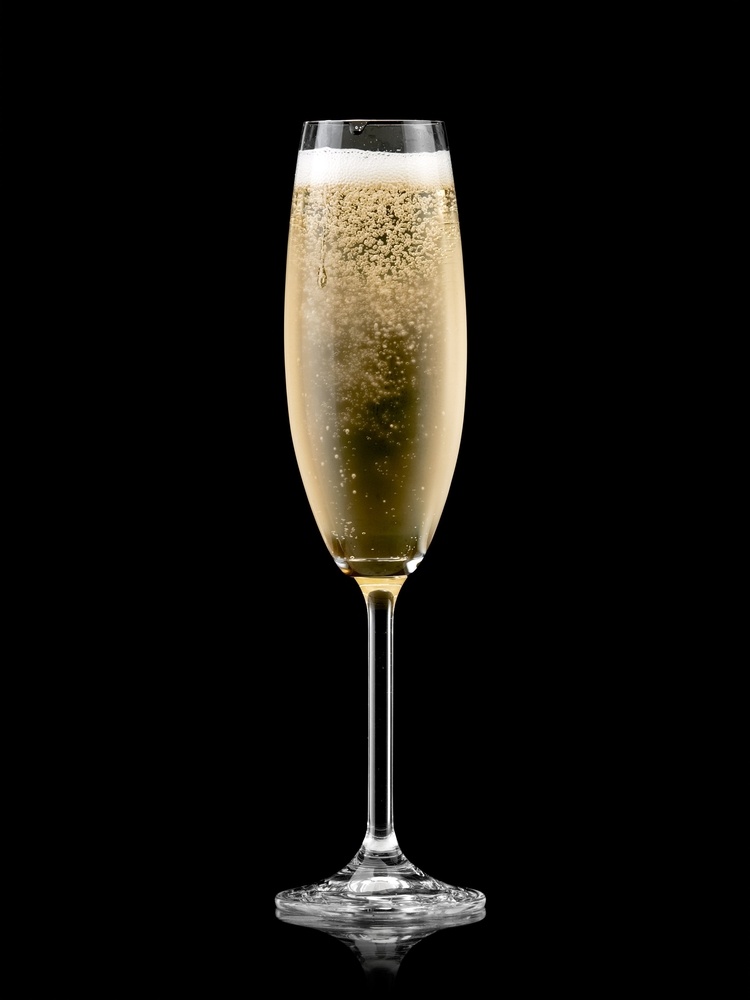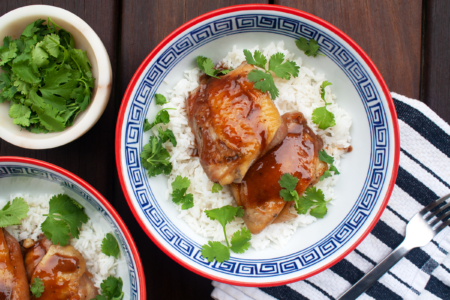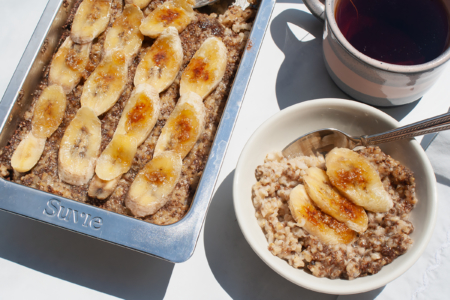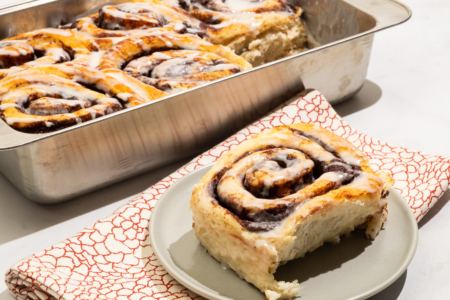Just as with regular wine, the shape of a drinking glass can significantly impact the taste of sparkling wine. The overall shape of the glassware can affect the aroma, flavor, and bubble content of all type of sparkling wine. So, when you’re planning on serving some bubbly to your guests, or just want to get the most out of your chosen bottle, it’s important to pick the right glass for the job.
Flute
The flute is possibly the most commonly used sparkling wine glass. These glasses have a thin stem and the receptacle itself is an elongated conical shape with a tapered rim. Champagne flutes usually hold between 6 to 10 fluid ounces of liquid.
The elongated shape and tapered rim are not simply for appearance’s sake: they contribute to the overall experience of drinking sparkling wine. The small surface area of the glass results in more bubbles being formed and the slightly pronounced bowl at the bottom of the glass accentuates the visually appealing sight of the bubbles rising to the top of the glass. The tampered lip prevents too many bubbles from escaping and prevents the sparkling wine from losing carbonation too quickly.
While flutes can be used for pretty much any sparkling wine, they are ideal for extremely dry options like Brut where the bubbles and crisp notes work in tandem.
Tulip
Tulips differ from flutes in that they have a wider body and a less tapered rim. Additionally, tulip glasses tend to have a pointed base as opposed to the flute’s rounded base.
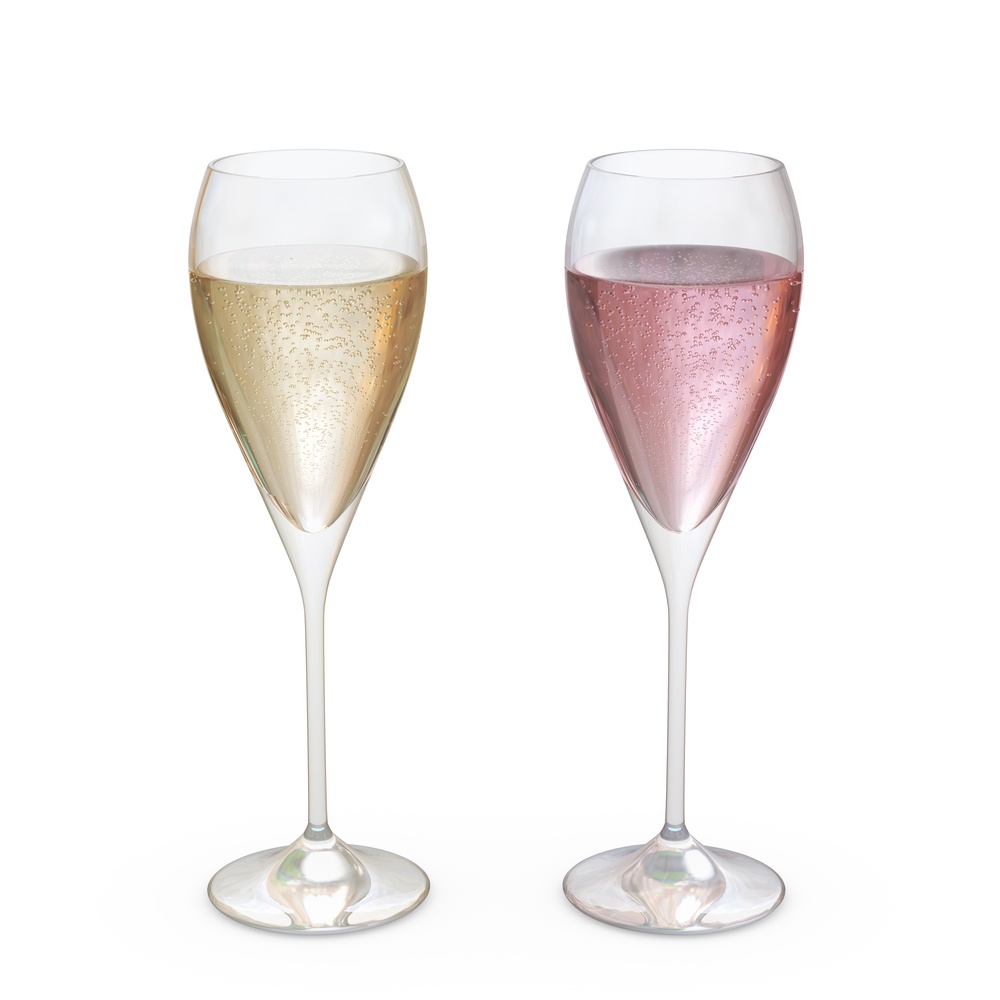
The wider body of the tulip glass allows the collection of more aromatics while the slightly wider rim still prevents too much of the carbonation from escaping. The pointed base results in a single stream of bubbles forming in the center of the glass, which can be quite visually arresting.
Because they better collect aromatics, tulips are often preferred by oenophiles. These glasses are best suited for less dry and more fruity sparkling wines.
Wide Tulip
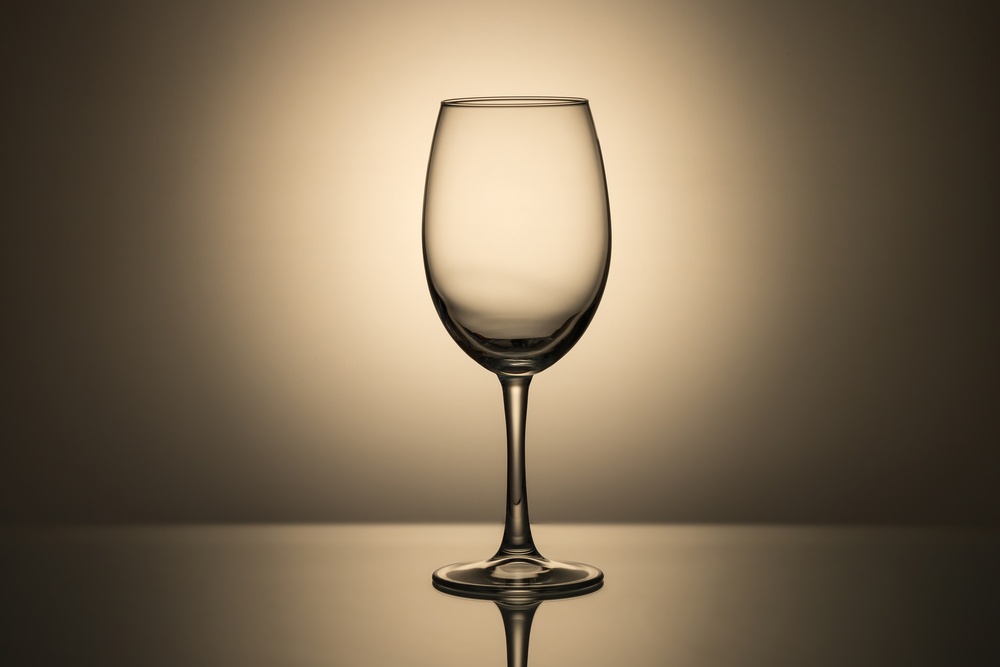
Some experts actually suggest ditching dedicated Champagne glasses altogether. Wide tulip glasses are often used to serve certain white wines and work equally well for sparkling wines. The wider bowl collects more aromas than regular tulips and the slightly tapered rim still prevents an excess of carbonation from escaping.
When drinking aged sparkling wines, where the aromas and aged flavors are the main attraction, wide tulips are often considered to be the best choice.
Coupe Glass
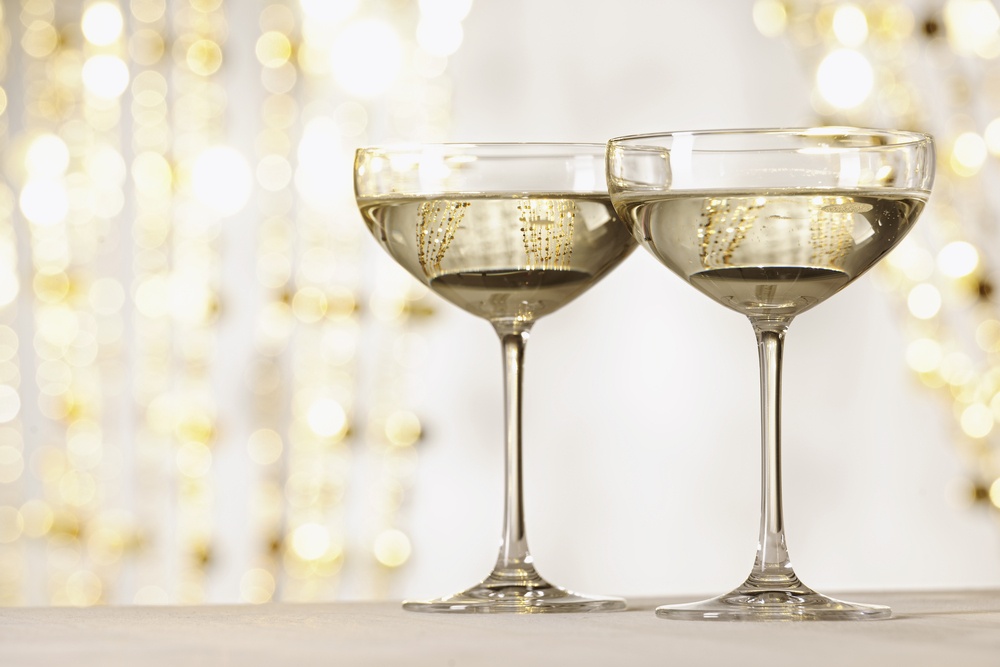
These iconic glasses had their heyday in the 1920s to 1940s and are now rarely seen outside of period dramas or Great Gatsby themed parties. Coupes differ from the other glasses on this list in that they have an extremely wide bowl and rim.
Bubbles dissipate very quickly in coupe glasses so you’ll need to drink quickly if you’re a fan of the fizz. On the plus side, the lack of bubbles does bring the soft fruity notes of wine forward. As a result, coupe glasses are best used when drinking sweet sparkling wines. In fact, these glasses were originally designed for a type of dessert champagne that was made with syrup.
